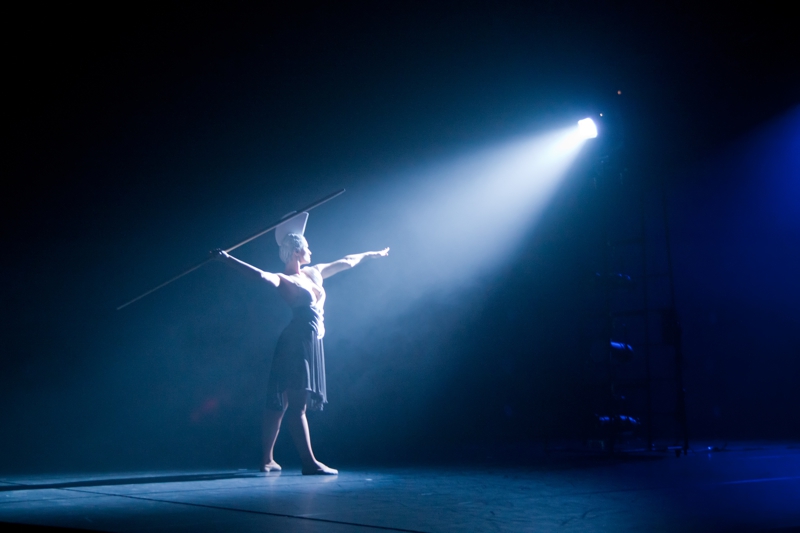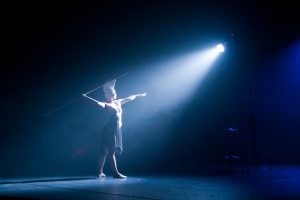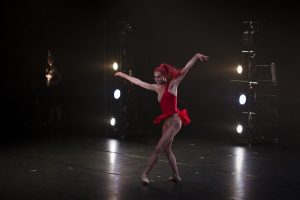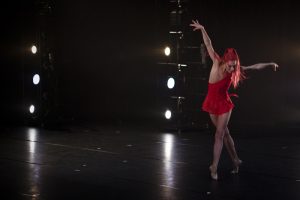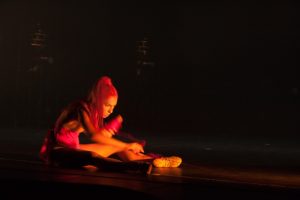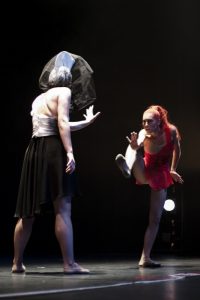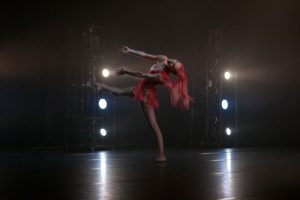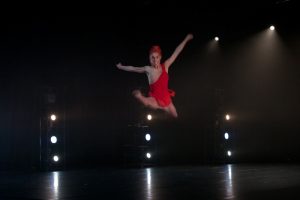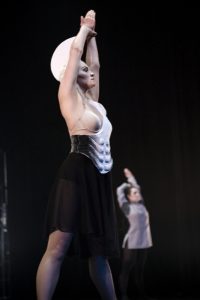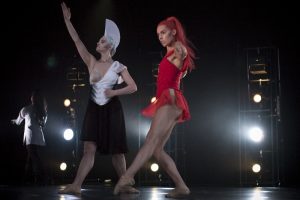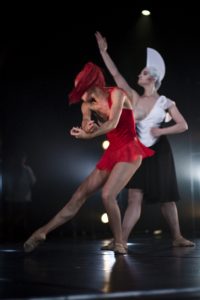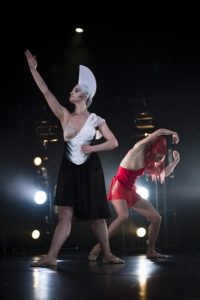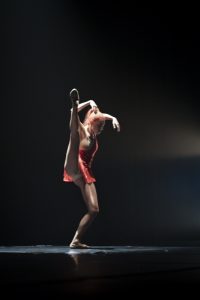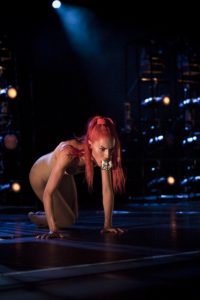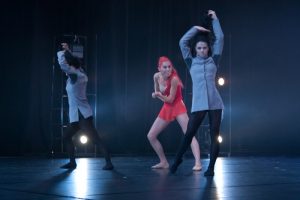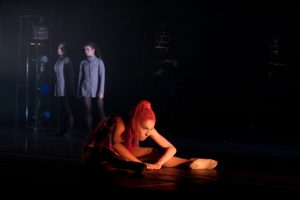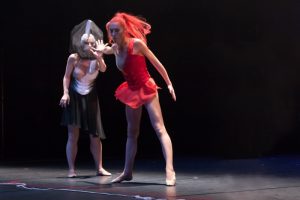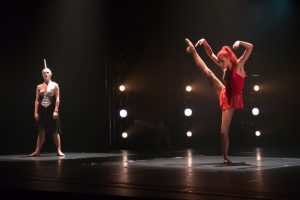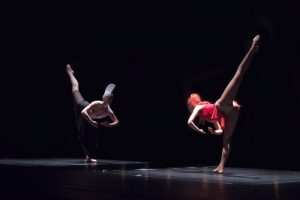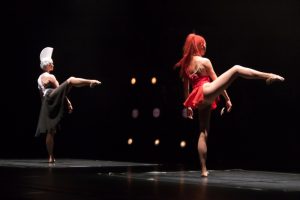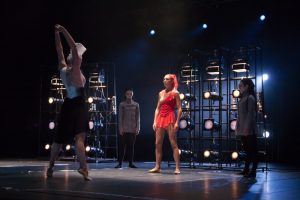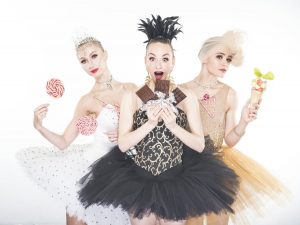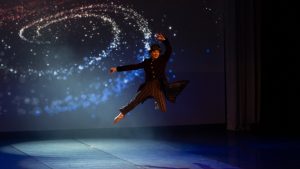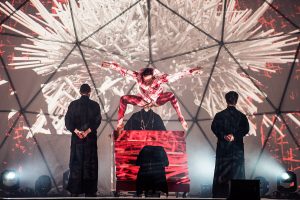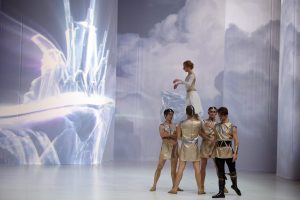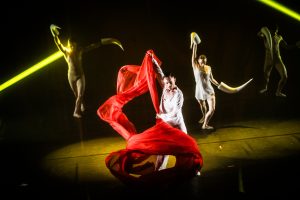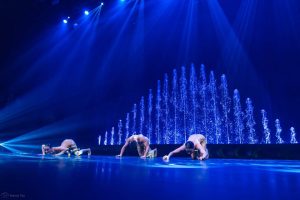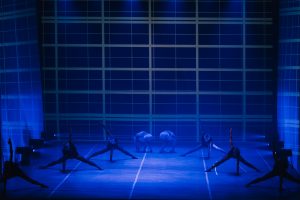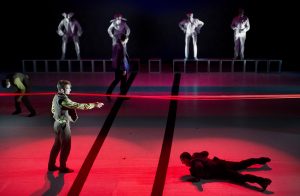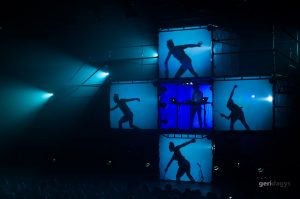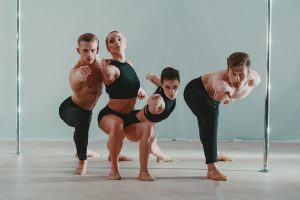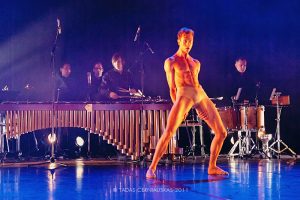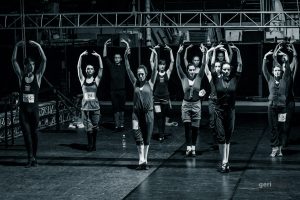REŽISIERĖ/CHOREOGRAFĖ: Marija Simona Šimulynaitė
ŠVIESŲ DAILININKAI: Tadas Valeika
KOSTIUMŲ DAILININKAS : Egidijus Rainys
MUZIKOS AUTORIAI : Rita Mačiliūnaitė, Philip Glass, Bela Bartok, Benjamin Britten
ŠOKĖJOS: Atėnė – Hilda Palkovskytė, Simona Paciukonytė, Viktorija Naumova, Irina Nazarenko.
Spektaklio “Arachnė“ ašis – antikinis Ovidijaus mitas “Metamorfozės“. Tai mitas apie jauną merginą Arachnę. Ji gyrėsi esanti geriausia audėja, geresnė net už deivę Atėnę. Vėliau Atėnė jai pasirodė apsimetusi sene ir liepė gailėtis dėl savo poelgio, bet ši metė iššūkį deivei. Atėnė jį priėmė ir varžybas laimėjo. Arachnė slegiama kaltės ir apmaudo mėgino nusižudyti, bet Atėnei jos pagailo ir ji pavertė merginą voru.
Spektaklį įkvėpęs mitas byloja apie visais laikais aktualią, pražūtingą puikybę. Puikybė – žmogaus ginklas Nr. 1, vedantis moralinės savižudybės link. Juo ir remiasi spektaklio potekstė. Visais laikais buvo ir bus žmonių, kurie bandą slėptis po puikybės skraiste sunaikina tik save patį, o ne aplinką, kuriai tai bando siųsti.
Arachnės, kaip ir daugelio žmonių, ypatingai – kūriančių, aklu siekiu tampa susitapatinimas su profesija – kaip iš verpėjos Arachnė paverčiama voru, visą gyvenimą savo syvais verpiančiu tinklus – “kilimus”, taip kiekvienas, turintis dovaną kurti, kiekviename kūrinyje palieka savo kūno syvą, savo vidaus sultis, jausmus, sveikatą. Auka, kurią iš savęs srovena dailininkas – tapydamas, rašytojas – rašydamas, šokėjas – šokdamas, bei visi kiti kažką kuriantys, yra gebėjimas prisiliesti prie aukštesnės materijos, gebėjimas būti arčiau dieviškumo. Dievas – pasaulio kūrėjas, o kiekvienas kūrėjas, kurdamas savo srityje, kuria savo pasaulį. Arachnė buvo prisilietusi prie “dieviškosios materijos”, tik lįsdama į Atėnės “daržą” užgavo jos autoritetą, todėl buvo paversta gyviu, turinčiu pašaukimą verpti, tapyti gijomis. Atėnė taip pasielgė iš malonės jaunai mergaitei, bet jei atidžiau pažvelgtume į vorą, suprastume, kad jis yra simbolis kosminės tvarkos, o jo audžiamo tinklo brėžinys lyginamas su saulės simboliu, dieviškosios dvasios spinduliavimu. Tad kodėl Atėnė nepaverčia Arachnės į varlę, ar musę, o pasirenka vorą? Kas tame slypi? Atėnės sprendimo atsitiktinumas ar jos apgalvotas poelgis? Juk Atėnė, didingas mitologijos veikėjas, senovės graikų išminties, strategijos ir karo deivė, vėliau – meno, amatų, mokslo globėja.
„Arachnėje“ akcentuojama graikų mitologijos siužeto linija gretinama su mūsų laikmečio aktualijomis, nagrinėjami moterų santykiai, kova dėl konkurencijos. Rezultatas, judesiu perteikiant kūrinyje gvildenamas tematikas, kūrybinio proceso metu stipriai įtakotas asmeninių kūrėjų potyrių.
Spektaklyje kuriamas ypatingas ir neįprastas apšvietimo dizainas – veiksmo linijoje sutinkamas kovos/varžybų motyvas akcentuojama šviesomis. Įvairūs prožektoriai paverčiami gyvais scenoje funkcionuojančiais veikėjais, stebinčiais ir dalyvaujančiais siužete. Choreografija jungiasi su technika, kontaktuoja su specialiais lazerių “šokiais“, bei visiškai kitaip, nei įprasta matyti, išsidėsto scenoje.
Graikų mitologija – sklidina daugybės antgamtinių būtybių. Būtent tai ir motyvuoja tokį scenografinį poelgį. Teatre paplitusi taisyklė – “apšvietimo turi nesimatyti“, šiame pastatyme pažeidžiama: scena išverčiama į kitą pusę ir visi maskuojami prožektoriai tampa akivaizdžiai matomi bei labai svarbūs pačiam šokiui.


